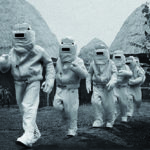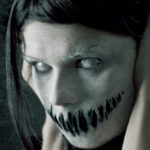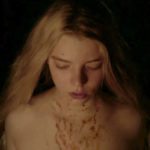 Mysteries
Mysteries  Mysteries
Mysteries  History
History 10 Surprising Stories About the Texas Rangers
 Humans
Humans 10 Philosophers Who Were Driven Mad by Their Own Theories
 Miscellaneous
Miscellaneous 10 Video-Game-Worthy Weapons and Armors from History
 Weird Stuff
Weird Stuff 10 Psychics Who Accurately Predicted Wartime Events
 The Arts
The Arts 10 Pieces of Art Inspired by a Broken Heart
 Health
Health 10 Science Fiction-Sounding New Medical Treatments
 History
History 10 Surprising Facts About the Father of Submarine Warfare
 Space
Space Ten Astonishing New Insights into Alien Worlds
 Weird Stuff
Weird Stuff 10 Bizarre Summer Solstice Rituals Still Practiced Today
 Mysteries
Mysteries Top 10 Haunting Facts About the Ghost Ship MV Alta
 History
History 10 Surprising Stories About the Texas Rangers
 Humans
Humans 10 Philosophers Who Were Driven Mad by Their Own Theories
Who's Behind Listverse?

Jamie Frater
Head Editor
Jamie founded Listverse due to an insatiable desire to share fascinating, obscure, and bizarre facts. He has been a guest speaker on numerous national radio and television stations and is a five time published author.
More About Us Miscellaneous
Miscellaneous 10 Video-Game-Worthy Weapons and Armors from History
 Weird Stuff
Weird Stuff 10 Psychics Who Accurately Predicted Wartime Events
 The Arts
The Arts 10 Pieces of Art Inspired by a Broken Heart
 Health
Health 10 Science Fiction-Sounding New Medical Treatments
 History
History 10 Surprising Facts About the Father of Submarine Warfare
 Space
Space Ten Astonishing New Insights into Alien Worlds
 Weird Stuff
Weird Stuff 10 Bizarre Summer Solstice Rituals Still Practiced Today
Top 10 Things You Probably Don’t Know About Fairies
The real fairies were not small, gauzy, pretty or fun. Yes, they could be helpful, but they could also wreak havoc in your house and force you out of it. They were scapegoats for just about everything which might go wrong amongst your family, crops and livestock, just as witches or vampires were elsewhere. And in seventeenth century England, fairies were believed to scare people to death. In real fairy country well into the 20th century, ‘a fairy place’ was rarely some remote piece of special landscape: the fairies were everywhere, and feared by all.
10 Frightening Fairies You Don’t Want To Mess With
10 The Fairies were descended from the Fallen Angels
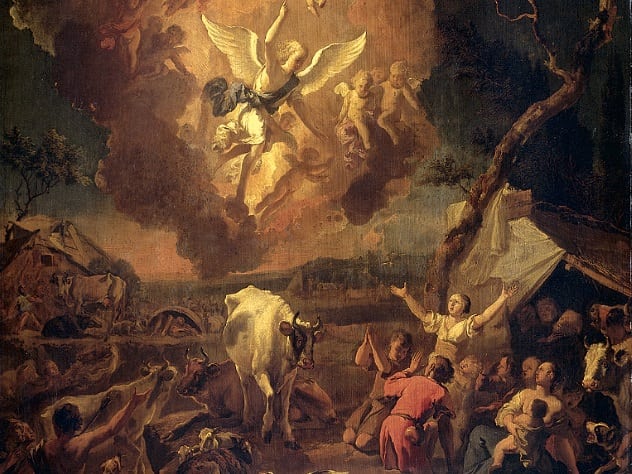
In the late 19th century people in Scotland, Wales, Ireland or the Isle of Man would tell you about the fairies’ impressive historic and Biblical pedigree: ‘the Proud Angel fomented a rebellion among the angels of heaven, where he had been a leading light. Many angels followed him—so many that at last the Son called out, “Father! Father! the city is being emptied!” whereupon the Father ordered that the gates of heaven and the gates of hell should be closed. This was instantly done. And those who were in were in, and those who were out were out; while the hosts who had left heaven and had not reached hell flew into the holes of the earth, like the stormy petrels. These are the Fairy Folk—ever since doomed to live under the ground, and only allowed to emerge where and when the King permits.’
This origin nicely fitted the tremendous power of the fairies, who some thought could destroy the world if they chose. And it also fitted their curiously inbetween status: they were neither simply good nor bad, not quite of this world or the next, neither human nor animal. Hence their identity, in traditional fairy territory, as ‘The Middle Kingdon’.
9 Fairy sightings
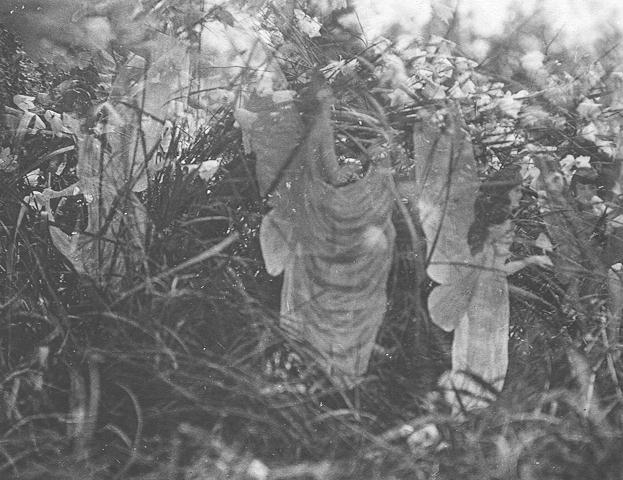
One thing I never expected to be worrying about when I first started researching fairies was the basic question: ‘Are fairies real?’ But, as the scholar Simon Young has shown, there are a staggering number of fairy sightings, from just about every country, and every type of witness. Across the period 1900-1901, the time of the Boer War, a boy of five saw every night columns of tiny soldiers marching over his bed, accompanied by splendid martial music. When he recalled this in 1951, he stated emphatically that he would swear to the truth of it ‘in any court of law’. This man was Victor Purcell, a History lecturer at Cambridge, where he remained until 1963.
Meanwhile, in Wales in the 20th century, a lone fisherman was startled to see and hear a small elderly male figure suddenly appear in the stream with him, gabbling excitedly, ‘Catch him, Tommy, I like to eat trouts, Tommy!’ Answering irritably and turning away to play his line out of some weeds, the fisherman was astonished to turn back and find that the fairy man had completely disappeared in open country. This very no nonsense witness was one Commander T.A. Powell—who went on to ask, incredulously, ‘How did he know my name?’
8 The Leprechaun Hunt of West Limerick
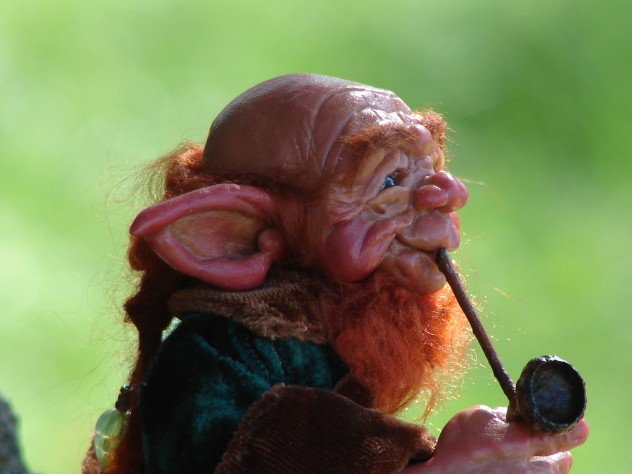
Not far from the fairy hill of Knockfierna, a schoolboy named John Keely has just hurtled across country to the house of the Mulqueens, and is breathlessly insisting that he has seen a fairy. The Mulqueens send him back to interrogate it. ‘I am’, the fairy responds ‘from the mountains and it is all equal to you what my business is.’ Next day two fairies appeared at the cross-roads between Ballingarry and Kilfinney, six miles from Rathkeale, in daylight, with skipping ropes, and ‘they could leap the height of a man’ according to Robert and John Mulligan and other eye-witnesses’. Soon crowds were assembling at the crossroads, with people coming from all over Limerick to see the leprechauns. Those who had spotted them asserted that they were ‘about two feet in height and had ‘hard, hairy faces like men and no ears’. They were dressed in red, with one sporting a white cape, and they wore knee-breeches and ‘vamps’ instead of shoes.
This leprechaun hunt seems to have occurred about the very end of August or start of September. The year was 1938. Locals were chasing the leprechauns because (as Diarmuid Ó Giolláin explains) these creatures have treasure. If you could catch one, you would then keep it in a box for a year and a day before it will reveal the location of its hoard. Any thoughts from Health and Safety are welcomed here.
7 Fairy Music
On the fairy-haunted Isle of Man, ‘on Dalby Mountain … the old Manx people used to put their ears to the earth to hear the Sounds of Infinity (Sheean-ny-Feaynid)’. Although these murmurs were probably just tides on pebbles, something more mysterious may have been occurring elsewhere on the island. W.W. Gill describes a remote fairy-haunted triangle of hills and river valley, where Manx folk would gather to hear an unearthly ‘singing, as of human voices in distant unison, exhaled mysteriously on still evenings out of a certain steep piece of ground on the opposite bank, called the Granane’.
Back in England in 1922, the composer and sometime Oxford fellow Dr Thomas Wood was holidaying with friends on Dartmoor when he heard ‘music in the air! It was overhead, faint as a breath. It died away, came back louder … It lasted 20 minutes. Portable wireless sets were unknown in 1922. My field glasses assured me no picnickers were in sight.’ Wood scored this music on the spot and insisted, ‘I am prepared to say on oath that what I wrote down is so close to the original that the authors themselves would not know the difference’. Recently, the American author Chris Woodyard performed this fairy music, via a transcription for electronic organ. Anyone who wants to achieve another musical first could also arrange a performance of Wood’s original score for two violins.
6 Fairy Poltergeists
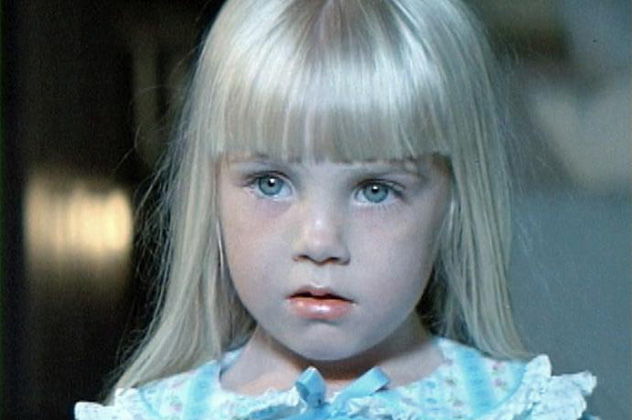
Do fairies really exist? Poltergeists certainly do, and in fairy territory a disruptive, violent or noisy spirit in a house would be seen as an angry fairy. Although poltergeists are often riotous and persecutory, in a significant number of cases they have left presents or done chores for householders. In this sense, the dualism of the fairies (powerful beings who can easily tilt from good to bad) fits perfectly.
The great fairy pioneer Katharine Briggs had a friend who as a child often visited the old ladies of Denton Hall near Newcastle in the 1890s. The ladies had, they told her ‘a silkie’ (glossed by Briggs as ‘the Northumbrian brownie’) which on the one hand ‘made it rather difficult to keep servants’ but, on the other, often helped with housework, ‘cleaning grates and laying fires’. She ‘dressed in grey silk, and they often met her … on the stairs’. During World War Two the friend returned to the Hall to find that the new occupants, although they never saw the silkie, certainly heard her. For ‘the son of the house was so persecuted by intolerable bangings in his room that they did not stay long’. I spoke a few months back to one of the staff at the Hall, and she confirmed that it is still haunted, albeit more mildly, in the present day.
5 Fairy Landscapes
In Ireland especially, the countryside was heavily marked by the presence of the fairies. Fairy forts or hills were one feature, and in 1911-12 councillors at Athlone, Westmeath, found they simply could not give away a house built beside the local fairy hill. Next, there were fairy trees, usually thorns. These were equally taboo, and new roads would have to swerve around them. A farmer in County Antrim who cut one down when drunk was said to have woken next morning with his head turned around backwards.
Most dangerous of all were fairy paths. This was because they were usually invisible. Country people might innocently build a new house, only to learn from the local Fairy Expert that all or part of their home lay across a path used by the fairies at least once a day. One solution was to throw open back and front doors at the appointed hour, so that the Good People could pass through invisibly. But here the fairy poltergeist also presented special problems. Sometime before 1959 a man called Paddy Baine and his young bride suffered such violent hammerings in their new home that they feared a wall would fall down. Local wisewoman Mairead ni Heine was called in, and explained that one ‘corner of the house … was interfering with the progress of the “good people”’. A stonemason sliced off a corner of the building, and peace was restored.
4 Changelings
In fairy country, the notion of the changeling child was far from being just whimsical folklore. Right through the nineteenth century, parents convinced that their child had been switched by the fairies would subject ‘the changeling’ to appalling cruelties in order to make the fairies reverse the swap. Babies or infants were immersed in poisonous foxglove essence, left outside in freezing weather, placed on hot shovels by the fire, or deposited on the seashore by the tide’s edge. Many were killed. In Ireland, one child who overheard discussion of his changeling status appears to have died of terror, knowing all too well the ritual horrors which awaited him.
The scholar Susan Schoon Eberly has shown that many of these suspect infants were suffering from distinctive medical conditions. The genetic disorder phenylketonuria (PKU), for example, affects metabolism and development, and is not immediately obvious after birth. Having been delivered of a seemingly normal, healthy baby, parents in a crowded, hard-pressed cottage would presently find that their infant looked oddly old and wrinkled, failed to speak, and was voraciously hungry, screaming constantly if it was not fed far more than other children. At one level, there was a certain logic in believing that the fairies had switched your once healthy baby. At another, there may have been a subconscious desire to be rid of this impossible and insatiable changeling.
3 Bridget Cleary
Those who suffered changeling rituals were usually infants or children. But as Angela Bourke explains, in early March 1895, one Michael Cleary of Ballyvadlea, Tipperary, became convinced that his wife Bridget was a fairy. Bridget was suffering from a fever, and possibly also some degree of mental imbalance. Goaded on by traditional fairy believer Jack Dunne, Michael subjected his 26 year old wife to some violent and degrading ‘fairy tests’: Bridget was stripped, manhandled, threatened, more or less force-fed, and had a chamber pot flung over her. Michael supposedly stated at one point, ‘She was not my wife … she was two inches taller than my wife’.
On 15 March Michael was threatening Bridget with a hot stick from the fire when her clothes burst into flame. He threw lamp oil over her and burned her to death. Her crudely buried body was soon found, and the English press exploded into a fury against this ‘medieval witch burning’, secretly delighted to have further ‘proof’ that the Irish were not fit to govern themselves. In fact, many of Cleary’s neighbours gathered to hiss and jeer when he was brought to trial. He could have hung for Bridget’s death. But, apparently convinced that Michael believed in his wife’s fairy status (after her death he had gone at night to the nearby Fairy Hill, hoping to bring the real woman home) the jury brought in a verdict of manslaughter. Cleary was sentenced to 20 years in jail, and later emigrated to Canada.
2 Fairy animals
Just in case the countryside was not sufficiently daunting to true fairy believers, you also had to be alert for fairy animals. In County Cavan a farmer had his chickens killed by fairy foxes, and in County Clare a man hunting rabbits fled from the animals in terror when he realised their true fairy nature. Fairy dogs could be benign. Welsh fairy dogs were white with red ears, and Manx ones white with red hats. On the Scottish island of Lewis in 1899, a bitter feud erupted between two women over a fairy dog’s tooth. Kate MacCaskill had threatened a neighbour, Mrs Mackay, saying that if she could get the fabled tooth she would drop it down Mackay’s chimney, thus setting the house on fire.
And then there were seals. Many held that, during the original descent of the Fallen Angels, Lucifer’s minions turned into fairies of the air, earth, or waters. The myth of the selkie recounted tales of beautiful seal women humanised into wives of coast dwellers, so long as the man kept her original skin hidden to hold her captive. Anyone who has seen a seal close up or heard the haunting songs they can make to one another might well admit an edge of the uncanny in these creatures. In 1839 seal-hunting was stopped in County Mayo from Downpatrick Head to Kilcummin. Two boys had declared that, when killing seals in one of the caves of that reach of coast, a white seal sat up and cried, “Spare your old grandfather, Daniel O’Dowd!” They argued with the seal, who, however, convinced them that he was their relative. He had for his sins done in the body been condemned for a certain time to walk the night as a seal.
1 Biddy Early
“Biddy Early beat all women. No one could touch her.” Born in 1798 and presently orphaned, Biddy Early went on to become perhaps the most famous folk healer and Fairy Doctor ever known in Ireland. The exact source of her powers – which many believed to derive from contact with the fairies – remains mysterious. She was evidently an accomplished herbalist. But her abilities as a healer seem to have gone beyond this. One man who came to Biddy’s Feakle cottage for his sick boy found around fifty people waiting ahead of him. Biddy took only presents (of meat and whiskey) for her services, and was often known to state that a particular complaint was beyond her powers.
She appears also to have been clairvoyant. When one set of wealthy visitors arrived and presented her with a bottle of cheap whiskey, she accurately berated them for hiding a more expensive one in their luggage. She ‘converted’ one hostile priest by telling him intimate details about his personal life, and another by paralysing him and his horse on a bridge until he begged a passerby that Biddy would release him. Among Biddy’s thousands of visitors, it was rumoured that one was a member of the English royal family, who travelled to County Clare specially to see her. After decades of Church hostility, twenty seven priests attended her funeral in 1874.
Top 10 Curious Encounters With Fairies
About The Author: Richard Sugg is the author of 13 books, including Fairies: A Dangerous History (Reaktion, 2018), Mummies, Cannibals and Vampires: The History of Corpse Medicine from the Middle Ages to the Falun Gong (3rd edn, 2020), The Smoke of the Soul (2nd edn, 2020), Bloodlust (2020) and Ride Your Horse through the Chocolate Sauce! His work has appeared in The Guardian, BBC History, The Lancet, the Daily Telegraph, Der Spiegel, the New Yorker, and on international radio and television. You can see him discussing fairies here, at London’s Conway Hall in November 2019. He posts videos on his work on Instagram and Twitter.
